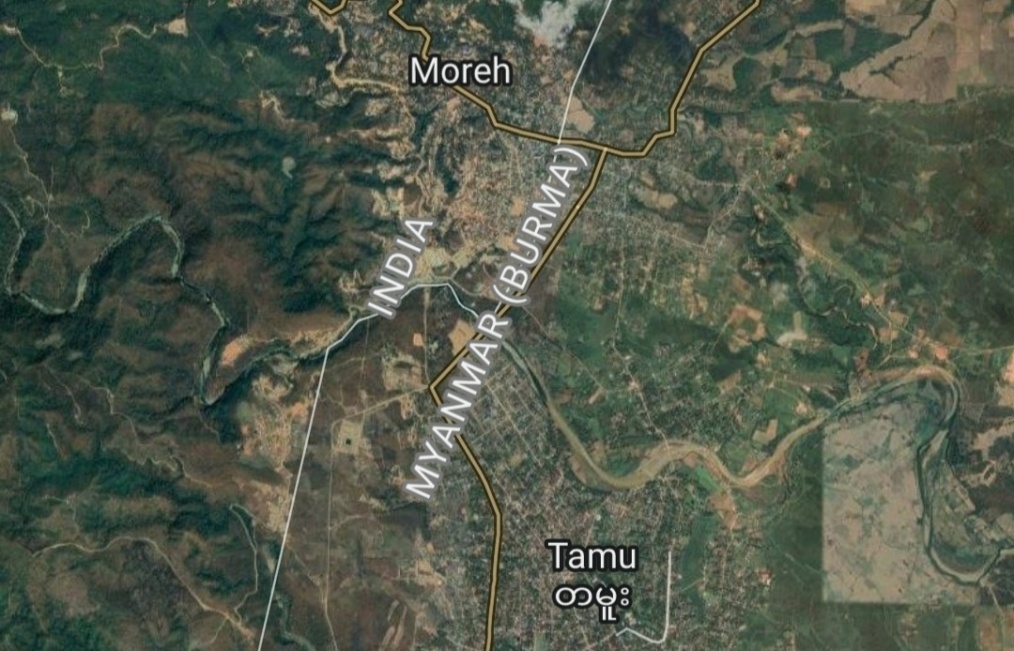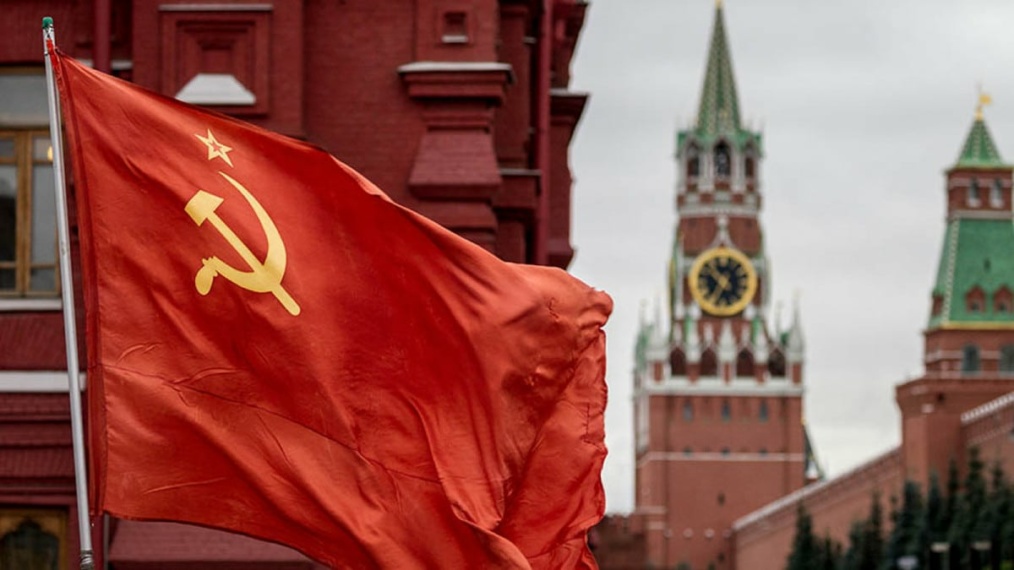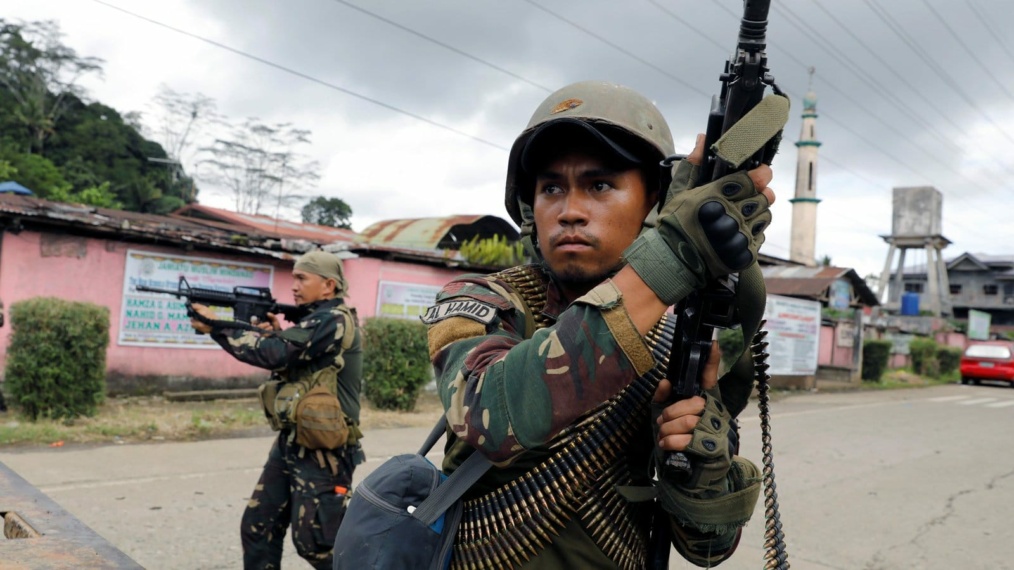Moreh is a small commercial gateway between India and Myanmar. It rests on the Northeastern side of the Indian border and is linked with Tamu, a small town in the Sagaing region in Northwest Myanmar. It is here that 99% of all land-based trade takes place between the two countries.
Amid the commercial exchange, the gateway also serves as a smuggling route for illegal trade and human trafficking. Narcotics like heroin and amphetamine-type stimulants are illegally smuggled across borders through this route. Other goods such as teak, gold, and firearms which are banned for trade without official license are also illegally traded.
A report by the Global Initiative Against Transnational Organized Crime (GIATOC) stated that serious smuggling ‘which has the potential to destabilize the wider Northeast’ takes place despite the counteractive measures taken by the state. The Northeastern region which is highly reliant on informal economy makes it arduous for state policies to be strictly enforced. It is for this reason that concerned officials, at times ‘tacitly ignores’ the illegal flow of contrabands which do not pose ‘political threat’ to the country. Given, the recent pandemic crisis which devastated the formal economy, it has been reported that the smuggling cases in the region have been exacerbated.
Act East Policy and its Challenges
New Delhi’s plan is to fast track the development process in the Northeast through the Act East Policy, which paves the way for locals to gain more income opportunities and employability. However, in such a region which is overwhelmed with insurgency and illegal trade, major challenges arise for the implementation of developmental policies.
Developmental funds tend to indirectly finance insurgent groups through extortion and ransom demands by insurgent groups. Insurgent outfits who operate in these regions extort significant sums of money for every cargo truck that passes through National Highway 102 and 37. The GIATOC reported that for every cargo truck that passes through the NH, a sum of 50,000 Indian rupees (680 US Dollars) is being extorted. In cases of failure to make such payments, workers and truck drivers are often kidnapped for ransom.
In the case of developmental projects, extortions take place in the form of percentage demands. The department responsible for setting up any projects are illicitly levied taxes on a range of 2-10 percent. With such illicit activity thriving in the region, it curbs and delays development initiatives taken up by the government or multinational corporations.
The ongoing India-Myanmar-Thailand Trilateral Highway Project which aims at linking India with the Southeast Asian countries has potential in creating ample opportunities for the region. However, the issue of insurgency and illegal trade can run parallel and can be exacerbated with the outset of new roadways to the region if such activities are not counteracted.
The thriving drug trade through the Golden Triangle (Myanmar, Thailand, Laos) can further expand its domain through these new linkages, influencing the wider northeastern region in India. It is reported that 80 unofficial crossing points exist between Moreh and Tamu. These crossing points are primarily used for smuggling. Hence, a substantial amount of drugs makes its way to Imphal which further leads to Kohima and on to Dimapur where, through its railroad, the drugs end up in Assam. From there the drugs are further distributed to the rest of India. Accordingly, the insurgents from the region make the best use of this opportunity and actively participate in this chain of narcotic supplies.
Extortion and the illicit trade of narcotics continue to destabilize both countries economies. The rising number of unemployment and the fatality rate of youths can both be attributed to these factors. Hence, a joint effort needs to be taken by both the countries to contain and curb such activities.
Recommendations
The Indian government has strategic approaches to tackle the supply of narcotics and drugs in the country, through both domestic policies and diplomatic approaches. However, with the thriving narcotic supply and extortion through the Moreh-Tamu roadways, it is evident there is more to do and that India along with Myanmar need to develop ground-level economic and security policy approaches in tackling the issue.
Though India has already elicited corporation from Myanmar in a bilateral agreement on narcotics control, more efforts are needed on the ground level. The exchange of intelligence and information is crucial; however, they are insufficient to tackle an issue which is linked to the heart of the narcotics trade.
Both India and Myanmar should set up more checkpoints on the newly established roadways and pay close attention to the 80 unofficial crossing points between both countries. For the Myanmar government this would be arduous, given, the Arakan Army and other insurgent group’s strong control over the region. However, with India, who has a slight upper hand in tackling the insurgency issue in the Northeast through its political approaches, security measures can be taken by strategically intensifying the presence of Border Security Forces and Paramilitary forces like the Assam Rifles in the border roads. Further, joint military operations with proper intelligence, the likes of Operation Sunrise in 2019, can be effectively utilized.
It should also be noted that economic measures are also paramount amid the security issues in both India and Myanmar. Hence, identifying the narcotic production and supply chain and further initiating better employment drives for the farmers and youths engaged in the illicit activity should also be prioritized.
With the ongoing political dialogue with some insurgent groups in the Northeast, there is potency in curbing the extortion and drug trades in the future. Hence, once a final settlement is reached, India can utilize the intelligence and manpower of the ex-insurgents to curb future drug trades and contraband supplies.
Vetilo Venuh, Counter-Terrorism Research Fellow







